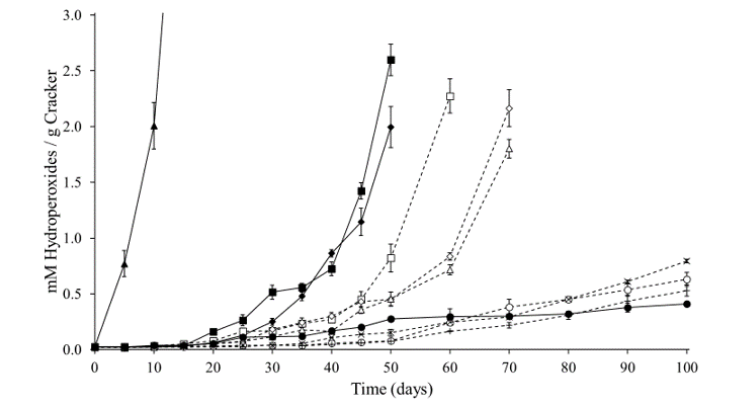Natural antioxidants to inhibit lipid oxidation in low moisture foods
ID# 2021-5285
Technology Summary
Penn State researchers have discovered that certain natural antioxidants sourced from a plant species exhibited increased antioxidant activity in low moisture content foods containing high levels of polyunsaturated fatty acids. The researchers demonstrated that efficacy rates are comparable to a synthetic antioxidant widely used in this category of food products having a water activity equal to or less than 0.85. The natural compounds, extracted from waste stream byproducts, delayed the formation of primary and secondary products of lipid oxidation compared to a control treatment with no added antioxidant, which developed a rancid off-taste within fifteen days. These results have given the researchers greater insights into the mechanistic activities at why certain compositions were more effective than BHT at increasing the induction period before the onset of lipid oxidation.
Application & Market Utility
Consuming omega-3 fatty acids often reduces chances of cardiovascular and inflammatory diseases. The food industry thus supplements foods with omega-3s to confer health benefits. However, these polysaturated fatty acids are highly liable to lipid oxidation, resulting in their breakdown and the loss of these health promoting benefits as well as the development of off-flavors. Though antioxidants can be and are added to these lipid-rich foods to slow the rate of oxidation, concerns about synthetic antioxidants such as BHT has created a need for natural antioxidants that convey similar health benefits without the concerns of toxicity associated with the synthetic compounds. The inventors demonstrated sustained protection against rancidity up to one hundred days in a cracker model system. The invention extends to other low moisture foods, including but not limited to cookies, granola bars, breakfast cereals, grain-based snacks, chips, peanut butter, and desserts – the latter of which are responsible for high saturated fats consumed by children and adults.

